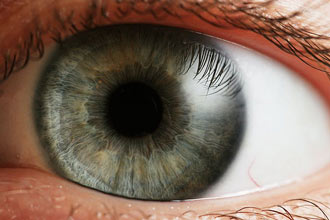2: Clinical Examination of Pupils
General Observation
- In a darkened room the smaller pupil is likely to be the defective one (a normal pupil will dilate in darkness)
- In bright conditions the larger pupil is likely to be the defective one (in a bright room the pupil naturally constricts)

Image credit: Petr Novák, Wikipedia
- Get patient to fixate a distant target and observe pupil sizes.
- Does each pupil have a regular, round, shape?
